So many wonderful textures in this space from Grego Interior Architects.
Apparently textured walls and ceilings are going to be all the rage in 2025, according to the retailers, designers, and publications that glom onto end-of-year trend stories the way a young Designer X used to glom onto strawberry pencils at the Woolie’s pick-and-mix.
Textured in this case doesn’t mean woodchip wallpaper and popcorn ceilings (hooray!). Apparently it refers to anything but: brick, stone, stucco…
Adding some of these textures to a room is a major investment. And often the results are disappointing. I’ve yet to see faux brick that doesn’t look faux, and a lone stone wall in an otherwise standard contemporary room is sort of the decor equivalent of mutton dressed as lamb.
Which is not to say one shouldn’t add texture to one’s walls, even if said walls are in a fairly featureless new build or a 1960s terraced house from which the woodchip has been painstakingly removed. I love using texture to make walls and ceilings feel like a part of the room, rather than like boundaries between the room and the rest of the home.
So let’s look at inspiration for textured walls that don’t require major construction and, should decorator’s regret ensure, are relatively simple to change out.
Time will tell if reeded panels become dated as quickly as shiplap (thankfully) has or if they’ll become contemporary classics. I’m rooting for the latter, especially when reeding is used to visually divide a space into zones, as Emma Gurner does here. Photo by Frenchie Cristogatin.
This is a beauty salon rather than a home, but adding reeds to a wall and then extending them up to the ceiling like a canopy would be fabulous in a small kitchen or a bathroom. I also like how the base of the counter echoes the reeding in a larger scale. I’m a sucker for including the same pattern in varying scales within a space. Photo courtesy of UK Home Interiors.
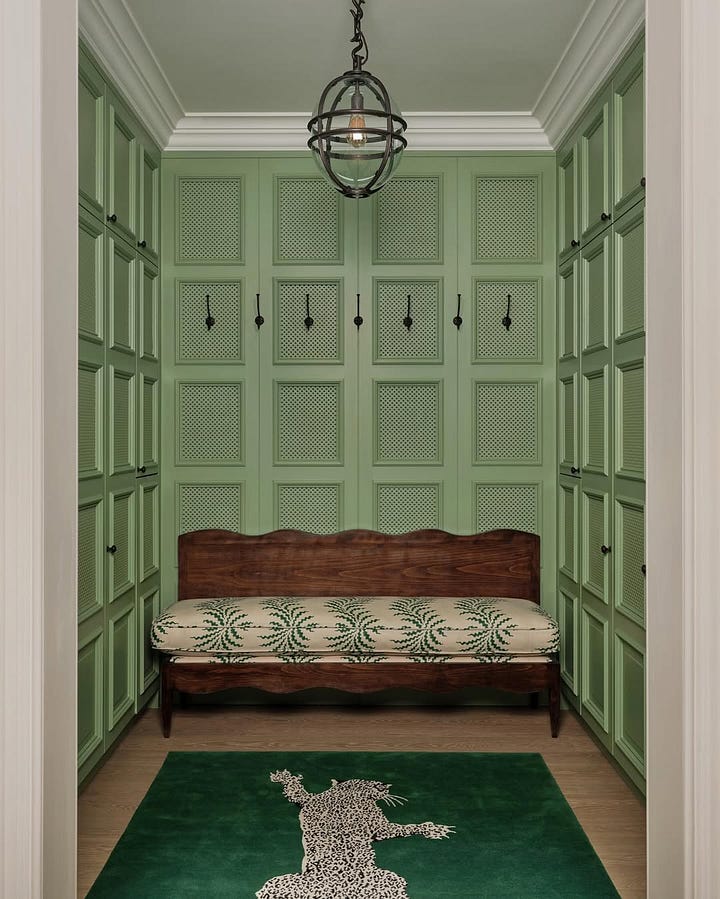
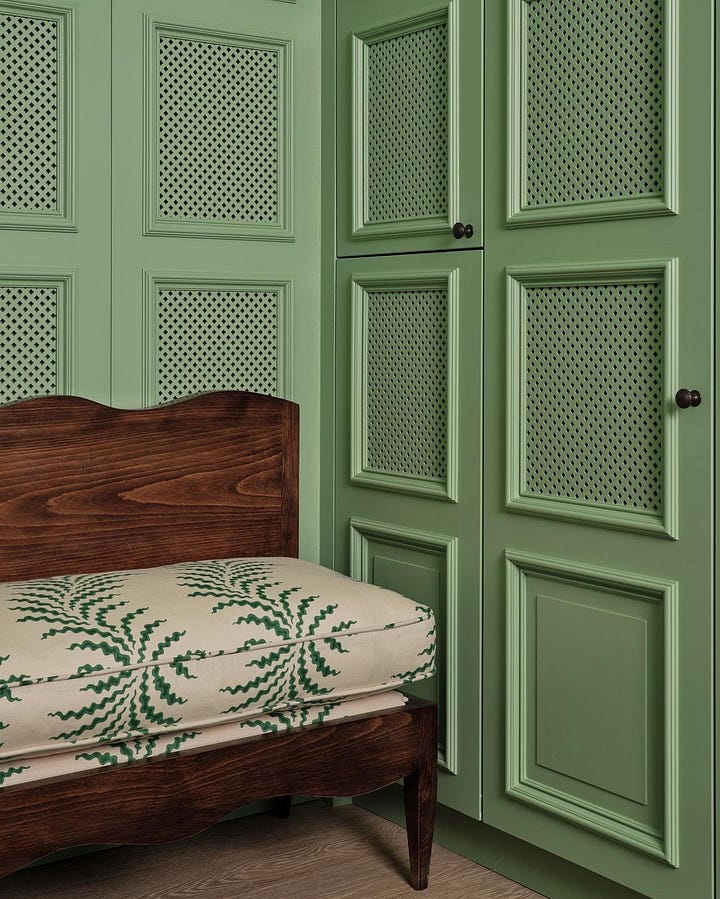
Moulding is an OG of wall texture. In this cloakroom, Lucinda Sanford Design gives traditional moulding a twist by filling the centre of nearly all the frames with small-scale trellises. The scalloped bench and the wavy foliage print of the upholstery prevent the grid of the millwork from appearing too rigid. Photo by Astrid Templier.
Robin Gannon Interiors uses millwork in a satin finish to accentuate the organic texture of the grasscloth wallpaper. Introducing contrasting textures in the same or very similar hue instantly makes a room feel luxe. Photo by Dan Cutrona.
“Flocked wallpaper” probably conjures up images of traditional damasks. But look at the fabulous mod gold-accented flocked paper Audrey Curl uses in this half-bath! Also note the high backsplash: You don’t want your textured wallpapers getting splashed.
Venetian plaster is another old-school way to texturise walls as well as to give them an almost otherworldly glow. In this room by Lindsay Gerber Interiors, the plaster looks all the more lustrous set off by the matte millwork.
Limewash—seen here in this bedroom by Voodin Interiors—is less luminous than Venetian plaster, instead imparting a sueded effect. Unlike with Venetian plaster, one needn’t be a professional to limewash a wall. Limewash also much easier to paint over should you tire of its Old World charm.
The sleek lacquered texture of the accent wall in this room by Martin Kobus is an ideal counterpoint to the velvet upholstery and plush rugs. More texture comes courtesy of the rectangular panels of varying sizes and depths layered onto the wall.
This might be the most glorious example of textured walls I’ve seen: plaster work by Murak Decor. You should most definitely visit her Instagram page—extraordinary!
PS: I didn’t mention tile as an unexpected way to add texture to walls, and not just in baths and kitchens. However, I did devote a previous post to tile’s glories, which you can read here.


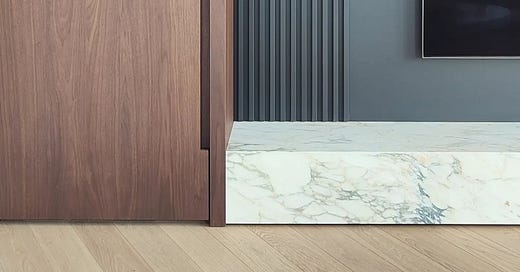



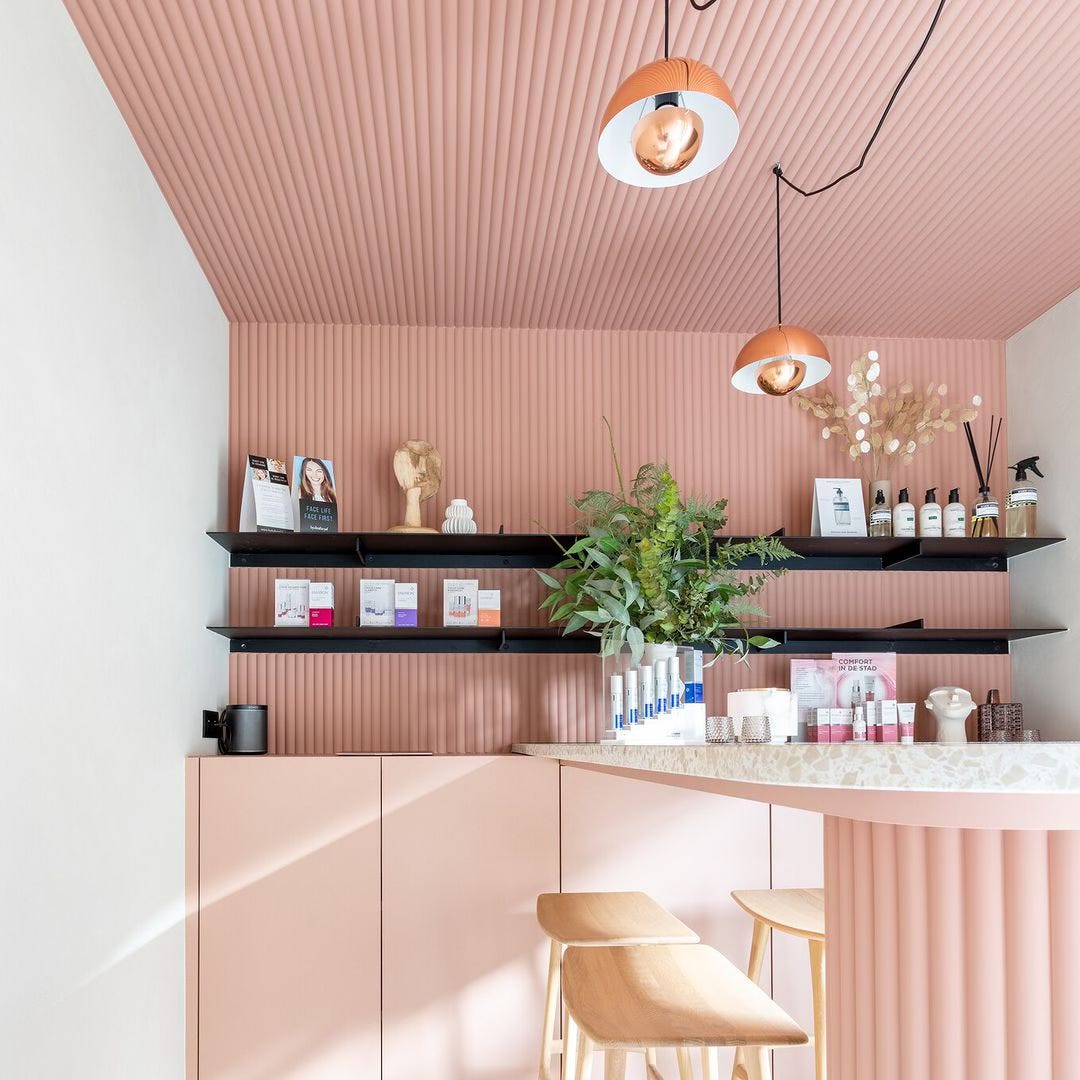
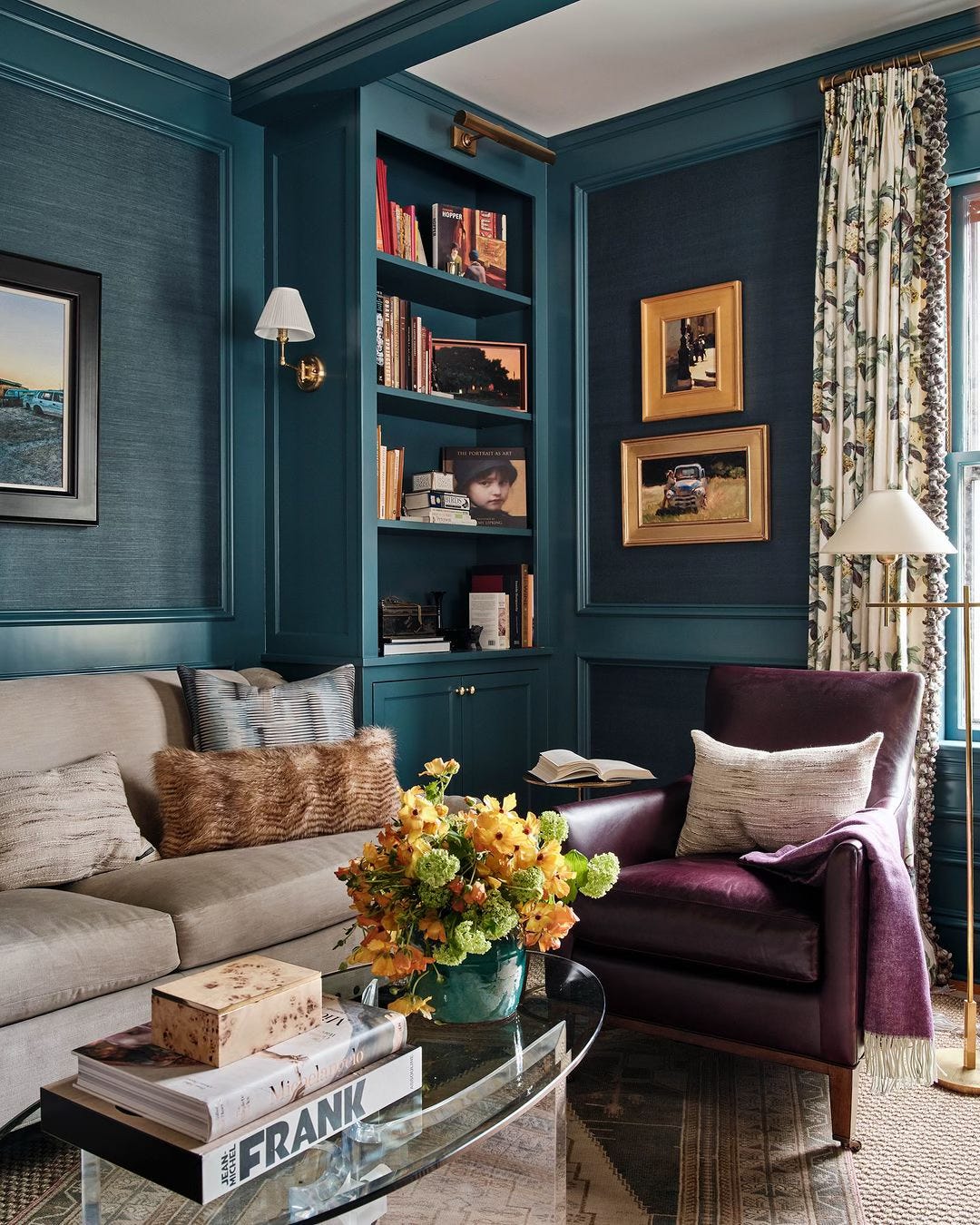
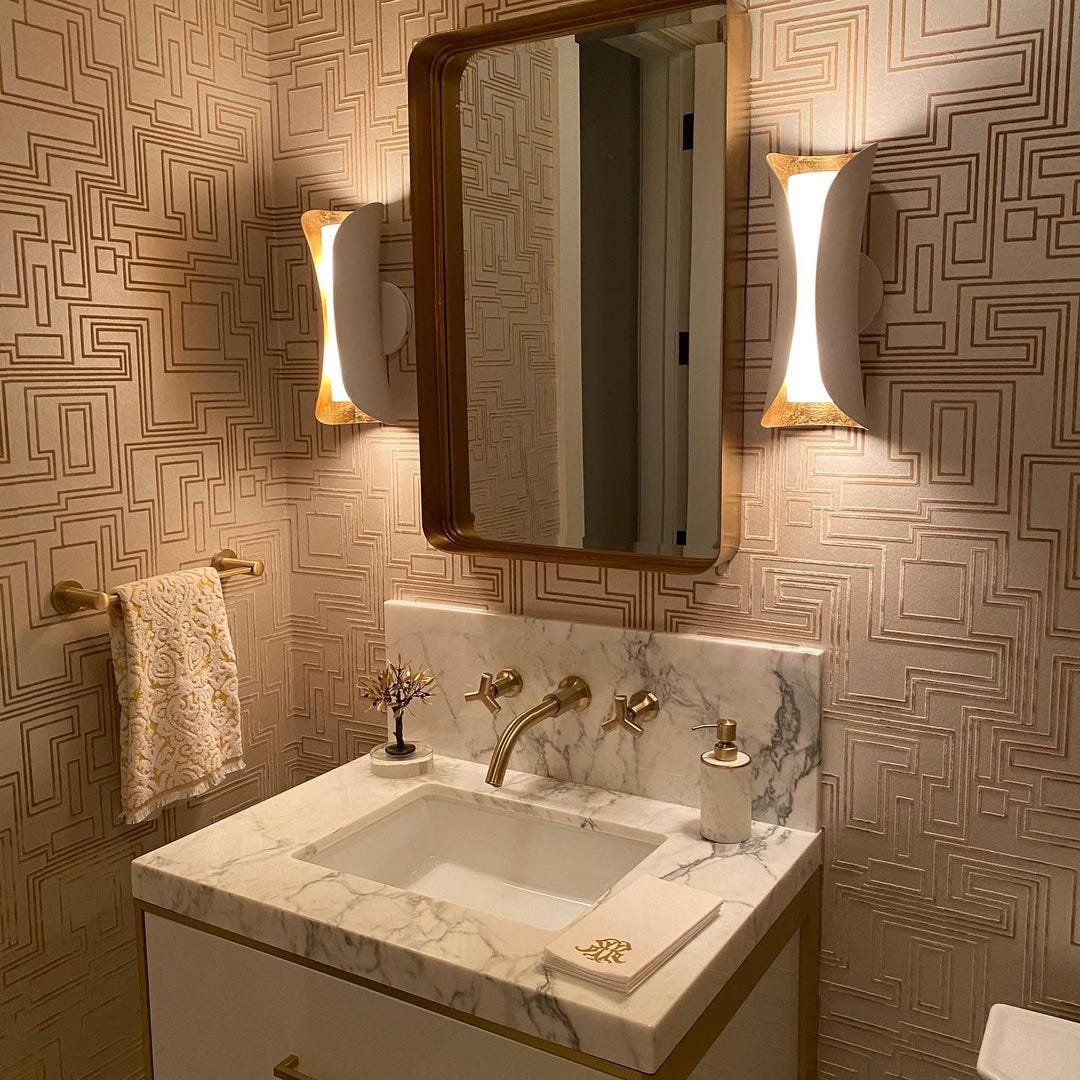

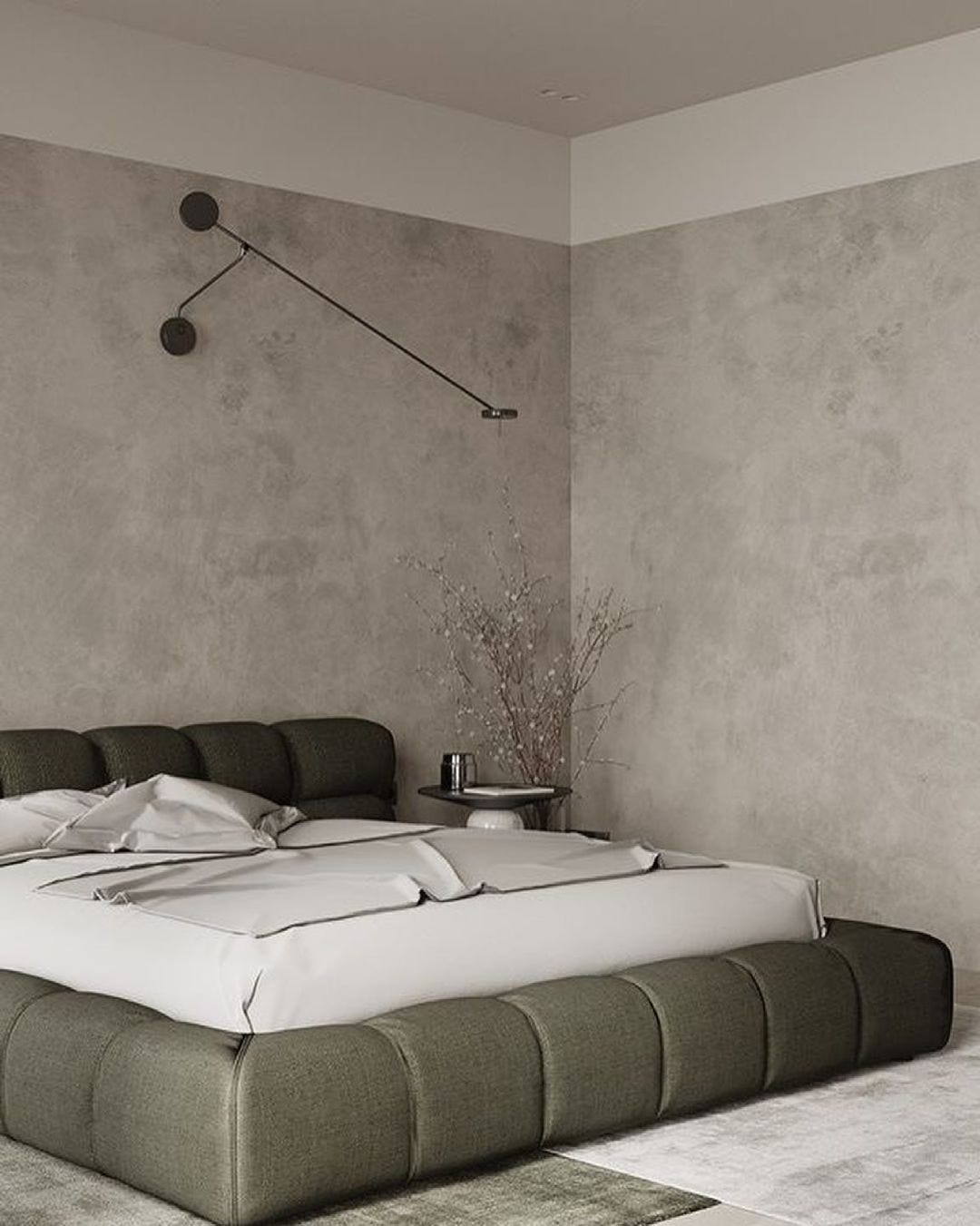

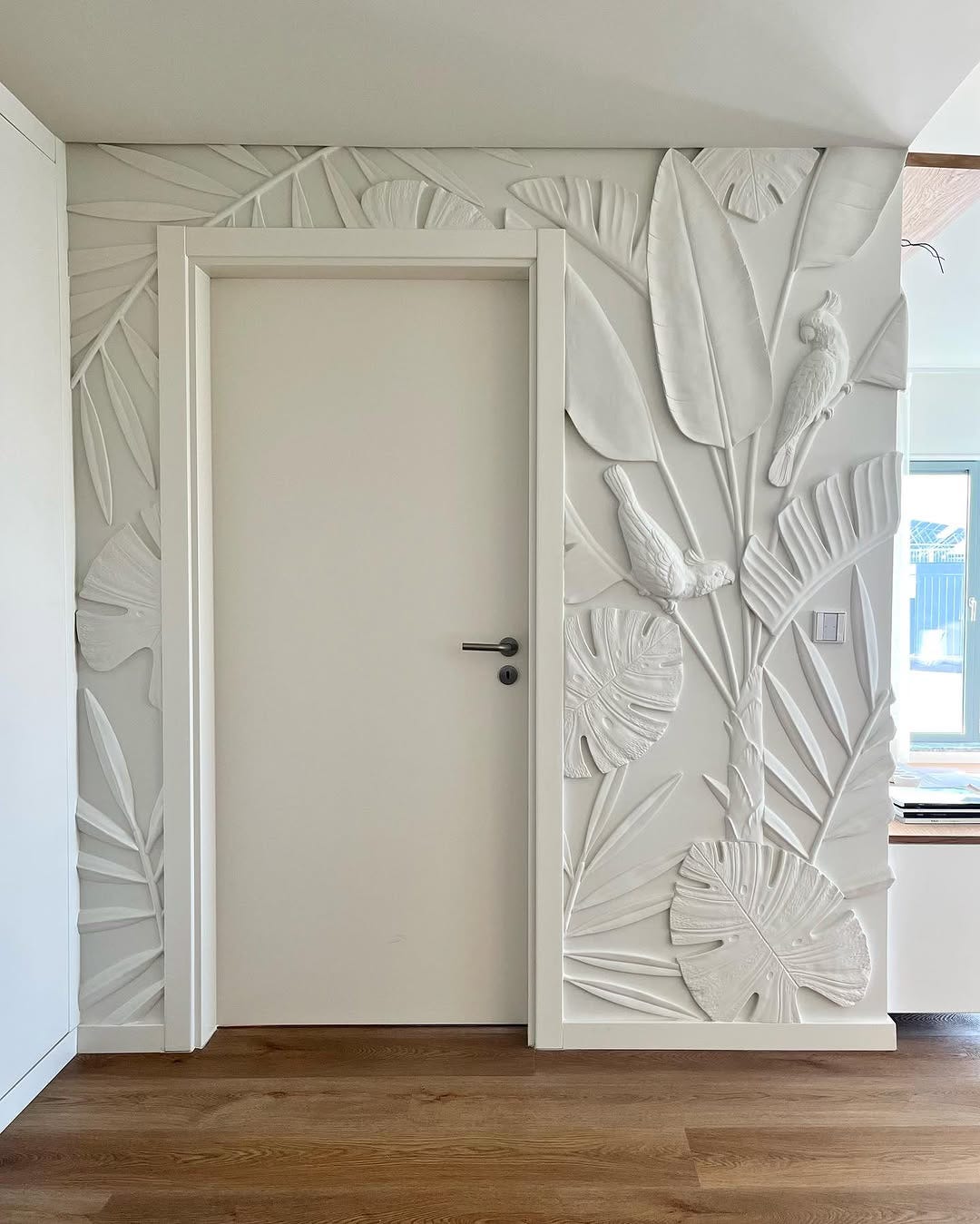
Maybe in my next house…ah